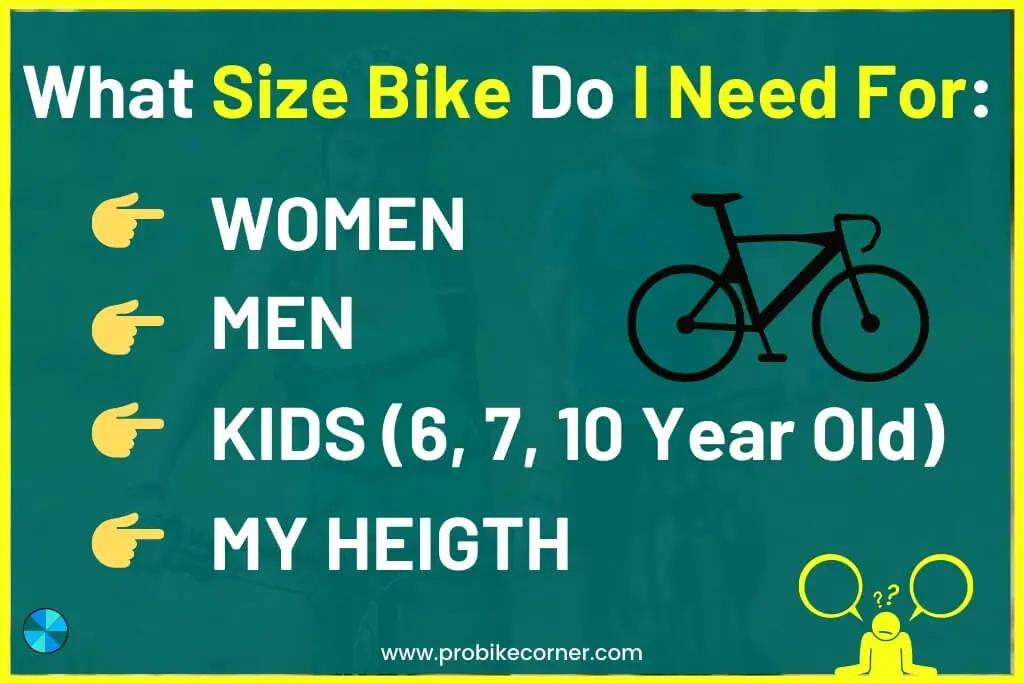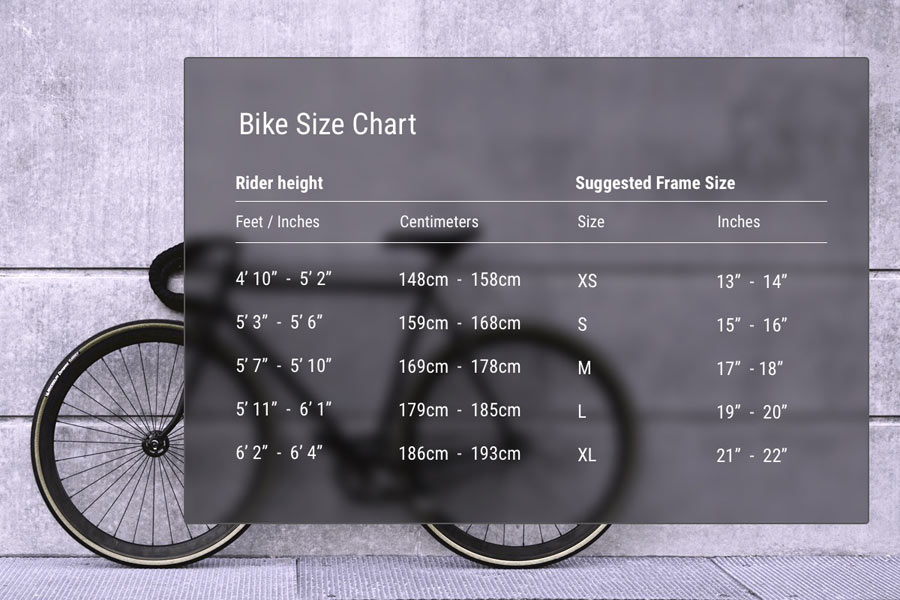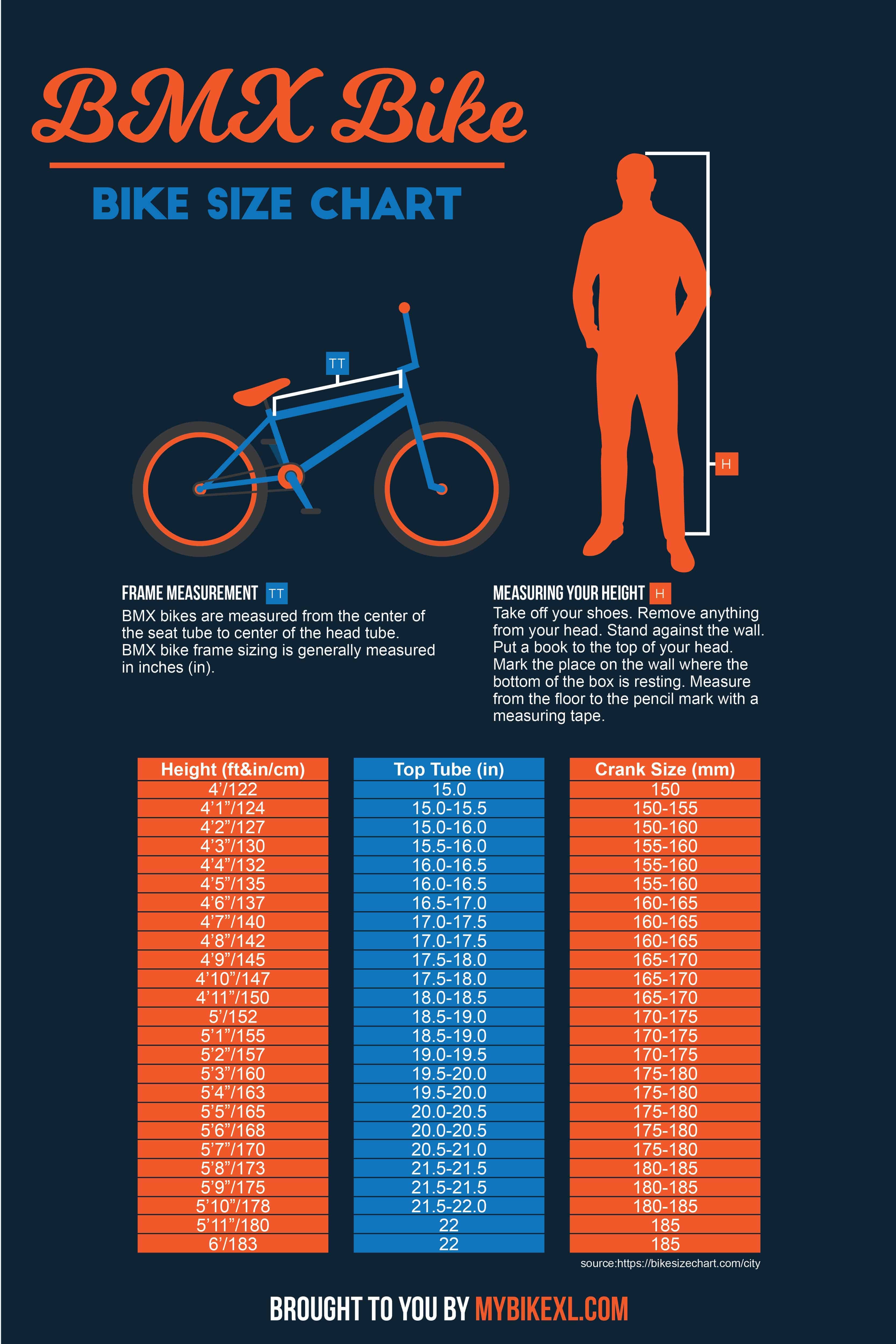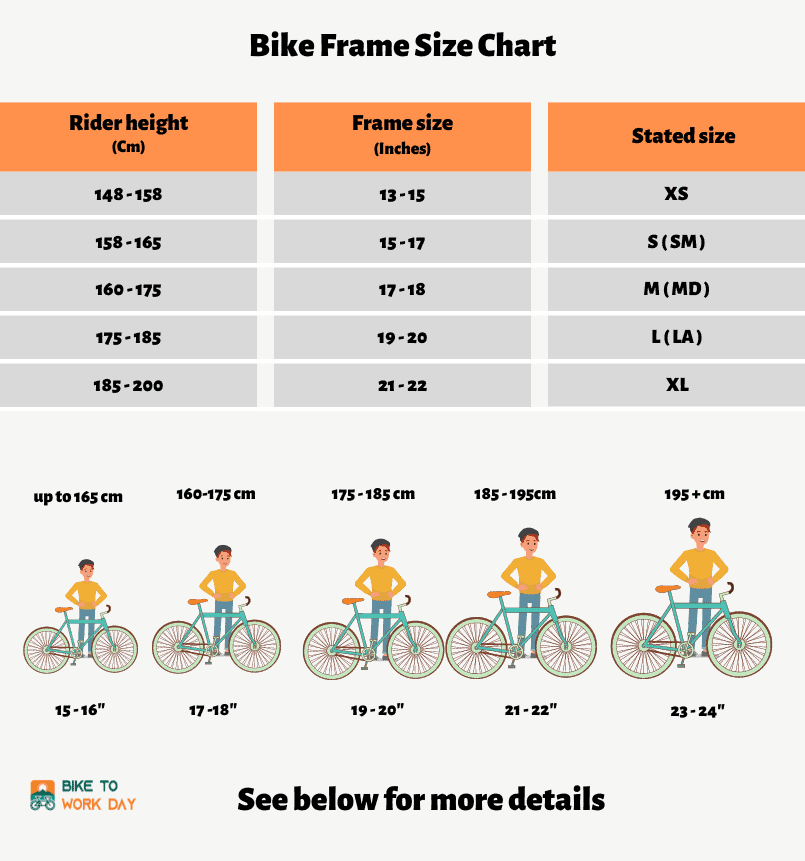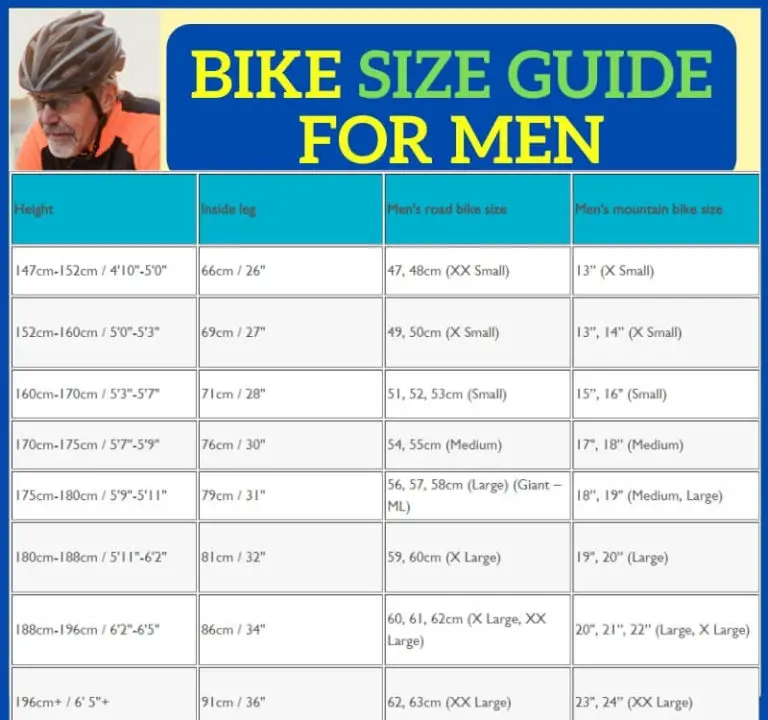Why Bike Size Matters: Avoiding Discomfort and Injury
Choosing the right bike size is crucial for a comfortable and enjoyable cycling experience. A poorly fitting bike can lead to discomfort, injury, and decreased performance. When a bike is too small or too large, it can put unnecessary strain on the body, particularly the back, neck, and knees. This can result in a range of issues, from mild discomfort to serious injuries, such as herniated discs, tendonitis, and chronic pain.
In addition to the physical risks, a poorly fitting bike can also negatively impact performance. When a bike is too small, it can be difficult to maintain a comfortable riding position, leading to decreased efficiency and endurance. On the other hand, a bike that is too large can be unwieldy and difficult to control, making it harder to navigate tight spaces and corners.
So, what size bike do you need? The answer depends on a variety of factors, including your height, inseam, arm length, and torso length. By considering these factors and choosing a bike that fits your body, you can ensure a comfortable and enjoyable cycling experience. Whether you’re a seasoned cyclist or just starting out, taking the time to find the right bike size is essential for avoiding discomfort and injury.
In fact, studies have shown that a properly fitting bike can reduce the risk of injury by up to 50%. This is because a bike that fits your body allows you to maintain a comfortable riding position, reducing the strain on your muscles and joints. By choosing the right bike size, you can enjoy a lifetime of comfortable and enjoyable cycling, free from the risks of discomfort and injury.
Understanding Bike Size Charts: A Beginner’s Guide
Bike size charts are an essential tool for determining your ideal bike size. However, understanding how to read them can be overwhelming, especially for beginners. To start, it’s essential to know that bike size charts vary between manufacturers and types of bikes. For example, a road bike size chart will differ from a mountain bike size chart.
When using a bike size chart, you’ll typically need to provide your height and inseam measurements. These measurements will help determine your ideal bike size, taking into account factors such as standover height, seat height, and handlebar height. However, it’s crucial to remember that bike size charts are only a guide, and the best way to ensure a comfortable fit is to test ride a bike before purchasing.
When evaluating a bike size chart, consider the following factors:
- Standover height: This is the distance between the ground and the top tube of the bike. A general rule of thumb is to have at least 1-2 inches of clearance between your inseam and the top tube.
- Seat height: This is the distance between the saddle and the pedals. A comfortable seat height will allow you to put both feet flat on the ground when sitting on the saddle.
- Handlebar height: This is the distance between the saddle and the handlebars. A comfortable handlebar height will allow you to maintain a relaxed riding position with your elbows slightly bent.
By understanding how to read a bike size chart and considering these factors, you can determine your ideal bike size and find a comfortable fit. Remember, the key to finding the right bike size is to take your time and do your research. Don’t be afraid to ask for help from a professional bike fitter or sales associate if you’re unsure about your ideal bike size.
How to Measure Your Body for a Bike Fit
To determine your ideal bike size, you’ll need to take a few key body measurements. These measurements will help you find a bike that fits your body comfortably, ensuring a safe and enjoyable riding experience. Here’s a step-by-step guide on how to take your body measurements for a bike fit:
1. Inseam: Measure the distance from the floor to the crotch seam of your pants. This will give you an idea of your leg length and help you determine the correct standover height for your bike.
2. Arm Length: Measure the distance from the center of your back to your wrist. This will help you determine the correct handlebar height and reach for your bike.
3. Torso Length: Measure the distance from the base of your neck to your waistline. This will help you determine the correct saddle height and position for your bike.
4. Shoulder Width: Measure the distance across your shoulders, from one shoulder tip to the other. This will help you determine the correct handlebar width and position for your bike.
Once you have taken these measurements, you can use them to determine your ideal bike size. Keep in mind that different bike manufacturers may have slightly different sizing charts, so be sure to check the specific chart for the bike you’re interested in.
When using your body measurements to determine your ideal bike size, consider the following factors:
- Standover height: Make sure you have at least 1-2 inches of clearance between your inseam and the top tube of the bike.
- Saddle height: Make sure your leg is almost fully extended when the pedal is in its lowest position.
- Handlebar height: Make sure your elbows are slightly bent and your hands are in a comfortable position on the handlebars.
By taking the time to measure your body and determine your ideal bike size, you can ensure a comfortable and enjoyable riding experience. Remember, the right bike size is essential for avoiding discomfort and injury, so don’t hesitate to take the time to get it right.
Bike Types and Sizes: What You Need to Know
When it comes to choosing the right bike size, it’s essential to consider the type of bike you’re interested in. Different types of bikes, such as road, mountain, and hybrid bikes, have varying size requirements. Understanding these differences is crucial to finding a bike that fits your body and riding style.
Road bikes, for example, are designed for speed and efficiency on paved roads. They typically have a more aggressive riding position, with a lower handlebar height and a longer reach. As a result, road bikes tend to have smaller sizes to accommodate this riding position. If you’re looking for a road bike, you’ll want to consider a size that allows you to maintain a comfortable riding position with your hands on the hoods or drops.
Mountain bikes, on the other hand, are designed for off-road riding and require a more upright riding position. They typically have a higher handlebar height and a shorter reach, which allows for better control and maneuverability on technical terrain. Mountain bikes tend to have larger sizes to accommodate this riding position. If you’re looking for a mountain bike, you’ll want to consider a size that allows you to maintain a comfortable riding position with your hands on the grips.
Hybrid bikes, which combine elements of road and mountain bikes, offer a more relaxed riding position and are suitable for commuting, recreational riding, and light trail use. Hybrid bikes tend to have a more neutral size range, making them a great option for riders who want a versatile bike that can handle a variety of terrain.
When choosing a bike size, it’s also essential to consider your riding style and terrain. If you’ll be riding on technical terrain, such as mountain trails, you’ll want a bike with a more upright riding position and a larger size to accommodate this. If you’ll be riding on paved roads, a smaller size with a more aggressive riding position may be more suitable.
Ultimately, the right bike size will depend on your individual needs and preferences. By considering the type of bike, your riding style, and terrain, you can find a bike that fits your body and provides a comfortable and enjoyable riding experience.
Real-World Examples: Bike Size Recommendations for Popular Models
Now that we’ve discussed the importance of choosing the right bike size, let’s take a look at some real-world examples of popular bike models and their corresponding size recommendations. Keep in mind that these are general guidelines and may vary depending on your individual needs and preferences.
Trek FX: The Trek FX is a popular hybrid bike that’s perfect for commuting, recreational riding, and light trail use. For riders between 5’2″ and 5’6″, the recommended size is 17.5 inches. For riders between 5’7″ and 5’11”, the recommended size is 19.5 inches. For riders over 6’0″, the recommended size is 21.5 inches.
Specialized Sirrus: The Specialized Sirrus is a versatile bike that’s designed for fitness riding, commuting, and recreational riding. For riders between 5’2″ and 5’6″, the recommended size is 16 inches. For riders between 5’7″ and 5’11”, the recommended size is 18 inches. For riders over 6’0″, the recommended size is 20 inches.
Giant Contend: The Giant Contend is a popular road bike that’s designed for endurance riding and racing. For riders between 5’2″ and 5’6″, the recommended size is 47cm. For riders between 5’7″ and 5’11”, the recommended size is 51cm. For riders over 6’0″, the recommended size is 54cm.
When choosing a bike size, it’s essential to consider your individual needs and preferences. Don’t be afraid to try out different sizes and models to find the one that feels most comfortable and natural for you. Remember, the right bike size can make all the difference in your cycling experience.
Test Ride Before You Buy: Ensuring a Comfortable Fit
Once you’ve determined your ideal bike size and narrowed down your options, it’s essential to test ride a bike before purchasing. A test ride will allow you to evaluate the fit and comfort of the bike, ensuring that it’s the right size for you.
When test riding a bike, pay attention to the following factors:
- Seat height: Make sure your leg is almost fully extended when the pedal is in its lowest position.
- Handlebar height: Ensure that your hands are in a comfortable position on the handlebars, with your elbows slightly bent.
- Reach: Check that you can comfortably reach the handlebars and controls without straining.
- Standover height: Make sure you have enough clearance between your inseam and the top tube of the bike.
During the test ride, take note of any discomfort or issues you experience. If you feel any pain or numbness in your hands, feet, or back, it may be a sign that the bike is not the right size for you.
Additionally, pay attention to the bike’s handling and responsiveness. A bike that’s the right size for you should feel stable and easy to control, with a comfortable riding position that allows you to maintain good posture.
By test riding a bike before purchasing, you can ensure that you find a bike that fits your body and riding style, providing a comfortable and enjoyable cycling experience.
Common Mistakes to Avoid When Choosing a Bike Size
When choosing a bike size, there are several common mistakes to avoid. One of the most common mistakes is relying too heavily on size charts. While size charts can provide a good starting point, they don’t take into account individual variations in body shape and riding style.
Another common mistake is neglecting to consider personal comfort and riding style. A bike that’s the right size for you should feel comfortable and natural to ride, with a riding position that allows you to maintain good posture and control the bike with ease.
Additionally, some people make the mistake of choosing a bike that’s too small or too large based on their inseam alone. While inseam is an important factor in determining bike size, it’s not the only factor to consider. Other factors, such as arm length, torso length, and riding style, should also be taken into account.
Finally, some people make the mistake of not test riding a bike before purchasing. Test riding a bike is essential to ensuring a comfortable fit and to getting a feel for how the bike handles and responds to your riding style.
By avoiding these common mistakes, you can ensure that you find a bike that’s the right size for you and provides a comfortable and enjoyable riding experience.
Get the Right Fit for a Lifetime of Cycling Enjoyment
Choosing the right bike size is a crucial step in ensuring a comfortable and enjoyable cycling experience. By taking the time to determine your ideal bike size and considering factors such as riding style, terrain, and personal comfort, you can find a bike that fits your body and provides a lifetime of cycling enjoyment.
Remember, the right bike size is not just about finding a bike that fits your body, but also about finding a bike that meets your riding needs and preferences. Whether you’re a casual rider or a serious enthusiast, taking the time to find the right bike size will pay off in the long run.
So, what size bike do you need? By following the guidelines outlined in this article, you can determine your ideal bike size and find a bike that provides a comfortable and enjoyable riding experience. Don’t settle for a bike that’s too small or too large – take the time to find the right fit and enjoy a lifetime of cycling enjoyment.


